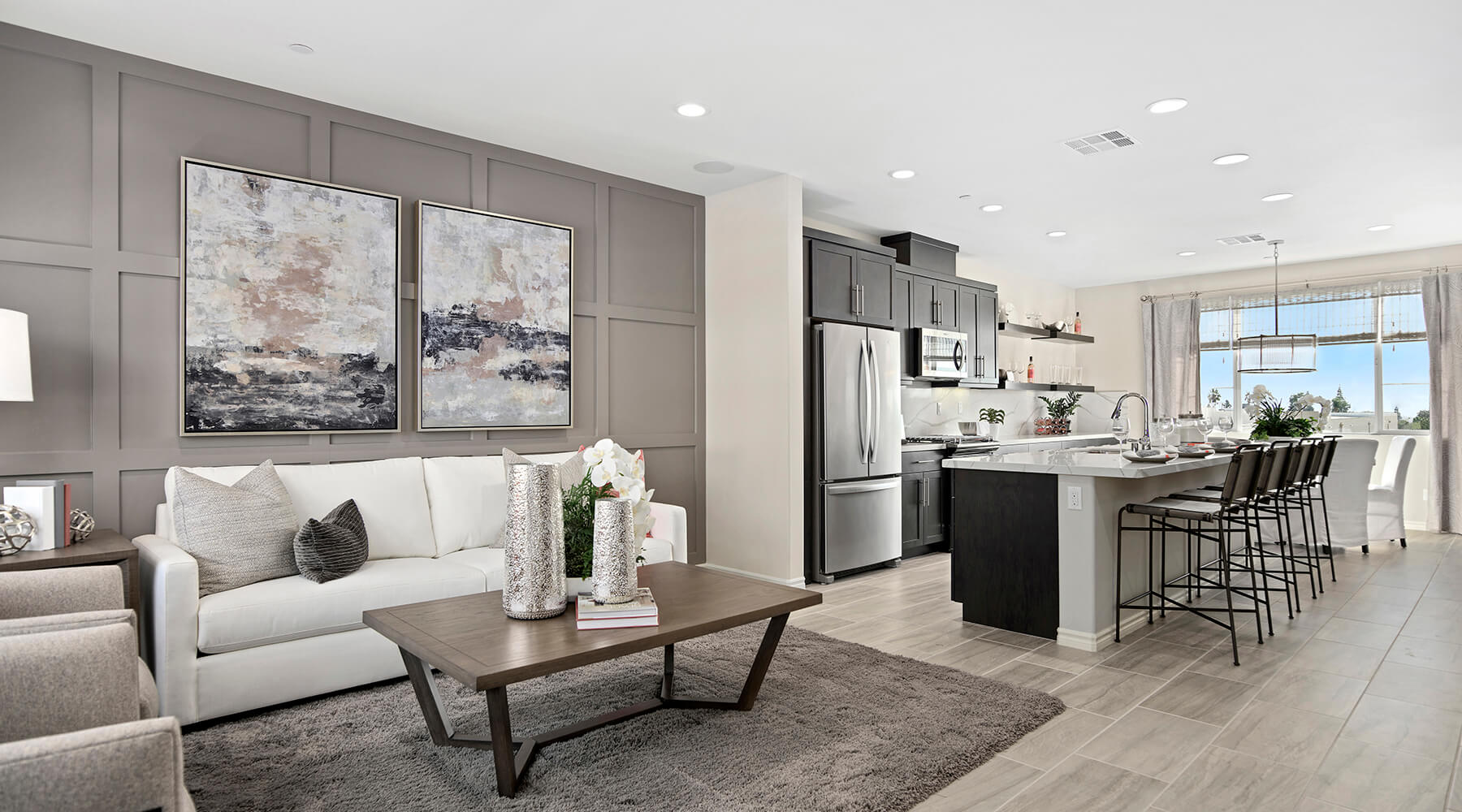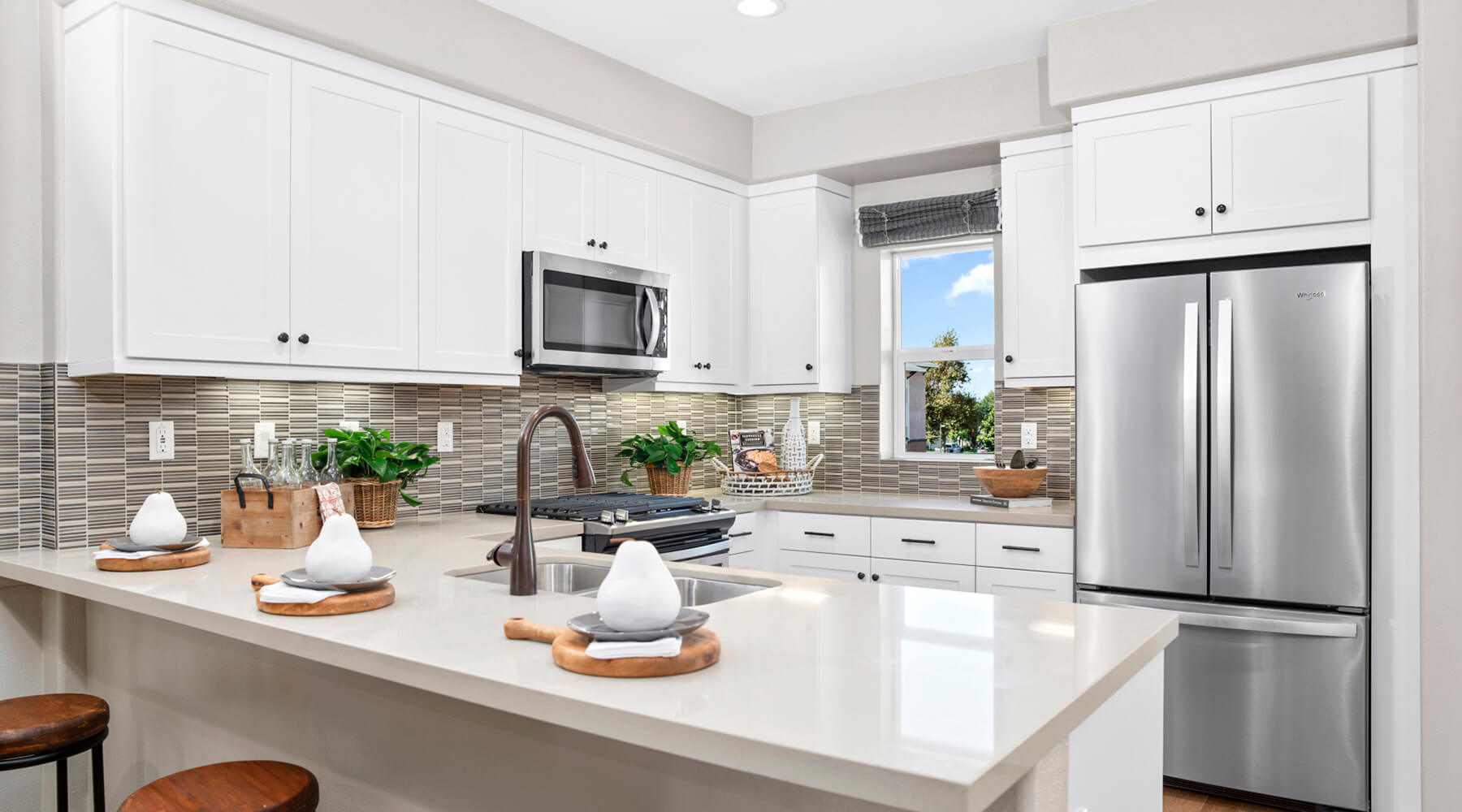OC Register: “Is the dining room back? Home builders in Irvine are offering a special space for family dinners”
Feb. 22, 2016

The dining room, an architectural victim of the Great Recession, may be back.
When homebuilders gained the nerve to start building anew after the housing bubble burst, brash home designs gained quick popularity. Developers rolled out models in lower- to mid-price ranges that were missing several new-home standards, most notably the formal dining room. This winter, however, several noteworthy new-home communities are offering homes with a more obvious dining area.
Why the apparent yo-yo for the formal dining area?
For starters, industry research revealed for too many years that many buyers lost interest in certain “traditional” parts of a home. Dining rooms and living rooms no longer met changing lifestyles and household budget pressures.
Yet selling a new home was too easy for too long for developers, so it took a dramatic industry downturn for change that now seems obvious. I mean, when did you last use your dining room table … for dining?
You see, today’s frantic family schedules leave little time for lengthy meals, creating limited use for square footage dedicated to formal dining. Ever-escalating home prices nudged house hunters to value every square foot, placing lightly used amenities on the endangered species list. And emerging patterns of longer ownership allow buyers to focus more on what fits their own lifestyle needs, and worry less about what a future buyer might want when it comes time to sell.
The Irvine Co. was the local pioneer of the new-look new home. It’s been intriguing to watch the land giant play with the designs of its homes as the real estate market recovered.
Six years ago, the developer owned by billionaire Donald Bren made what seemed to be a crazy bet: Building homes as the economy was in the earliest stages of an economic recovery. Armed with reams of market research – not to mention Bren’s ample checkbook – the company set out to redefine the products they were selling.
An architectural retooling debuted in 2010 with homes dominated by a downstairs “great room” that swapped formal dining rooms and living rooms for a wide-open living space wrapped with numerous windows. In many ways, it’s a modern spin on the classic California bungalow.
The sales results speaking for themselves: 7,857 homes sold on Irvine Co. land in the last six years. That’s approximately 45 percent of all the new homes sold in Orange County since 2010. That’s buyers spending roughly $5 billion, by my back-of-the-envelope math. And Irvine Ranch ranked as the top-selling master-planned community in the West for four straight years.
Now comes Irvine Co.’s 2016 home editions, featured in the new Eastwood community in north Irvine. Five of Eastwood’s six neighborhoods opening this month and in March have homes with a great room that can easily hold a traditional dining room table.
Irvine Co. homebuilding marketing honcho Tom Veal is quick to note this is no pullback from the great-room concept. Rather, the company’s research revealed homeowners yearned for a place where the family could comfortably gather for an occasional sit-down meal.
In the Irvine Co.’s Petaluma model, the dining area is a corner of the great room surrounded by two sets of sliding doors to the patio. It’s space that’s framed with a little extra drywall to visually separate it from the kitchen. Distinct, but not walled. Call it a “formal dining nook” perhaps.
The math behind the switch is simple. The typical Irvine Co. buyer is a household with 5.5 people, so there lies the desire to seat at least six. And Eastwood’s larger lots – three feet deeper than previous year’s homes – help fit the dining area into the format.
Veal uses a cellphone analogy to describe the rethinking process: What he sees as incremental change in home design is much like the annual introduction of freshened iPhone models from tech giant Apple.
“We spend a great deal time and effort to understand what our buyers want. What’s working. What’s not,” Veal says. “People tell us they love the great room, they just wish that had a little more formal space for eating.”
Irvine Co. isn’t alone in this resurgent desire for dining rooms.
At Rancho Mission Viejo, for example, TRI Pointe Homes has a dining room option for its Aubergine neighborhood. But Tom Grable, TRI Pointe’s Southern California president, notes the space can be configured in various ways, including a den or home office, too.
“It’s not so much of a rebirth of the dining room, but it speaks to having more flexibility for the buyer,” Grable says. “There’s still a percentage of people who’d like the formal dining space. But the great room is still how we all live.”
Another local builder is not convinced the dining room is back.
“If there is room for additional space downstairs, we will typically use that space as a downstairs bedroom rather than a formal dining room, only adding the dining room as a third option,” says Dave Barisic, a vice president at Brandywine Homes.
The dining area’s evolution – from formal to informal to perhaps a step back toward tradition – is more than just an intriguing look into the house hunter’s thinking.
I wonder if the renewed desire for an old-fashioned family gathering spot means the typical homebuying family finally has enough time to occasionally break away from life’s maddening rush to have a meaningful, home-cooked meal with loved ones.
If true, that’s a benefit for society plus a pretty good marker of consumer confidence.





